
Thursday, February 16th, 2023
Claude McKay, from Harlem to Marseille
Cover image: Screenshot from Claude McKay, de Harlem à Marseille
On Wednesday, February 8, the American Embassy hosted a Black History Month event at the U.S. Ambassador's residence in Paris. It celebrated the 100th anniversary of the arrival of Claude McKay, writer and poet, in France.
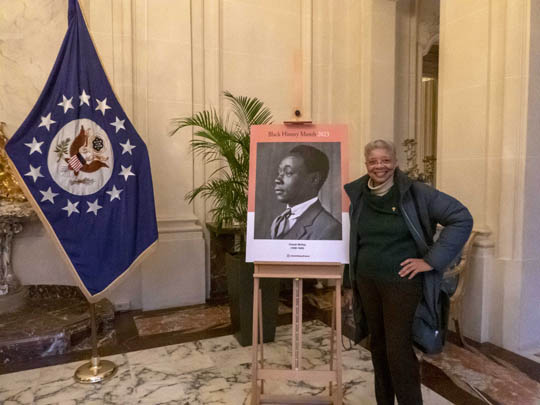 Monique standing next to Claude McKay portrait at U.S. Ambassador's residence
Monique standing next to Claude McKay portrait at U.S. Ambassador's residence
© Entrée to Black Paris
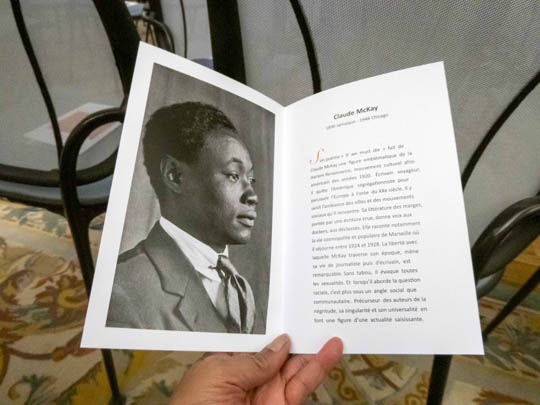
Program
© Entrée to Black Paris
The main attraction of the evening was the screening of the documentary called Claude McKay, de Harlem à Marseille (Claude McKay, from Harlem to Marseille) by Matthieu Verdeil. The room filled quickly and completely in anticipation of the event.
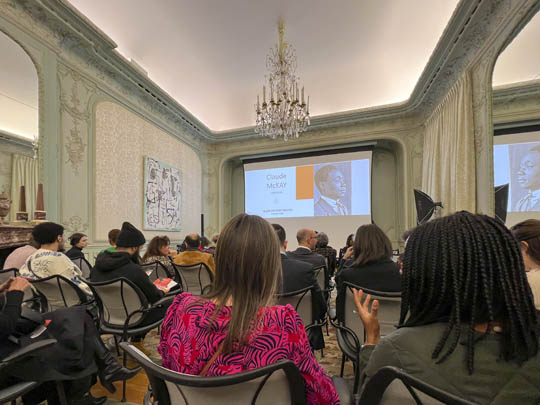 Audience awaiting the beginning of the program
Audience awaiting the beginning of the program
© Entrée to Black Paris
Mr. Verdeil was present that evening, and he addressed the audience after Ambassador Denise Campbell Bauer opened the evening with brief remarks. He informed the audience that an entire year of activities in honor of McKay - l'année KAY - is being sponsored by France's former Minister of Justice, Christiane Taubira.
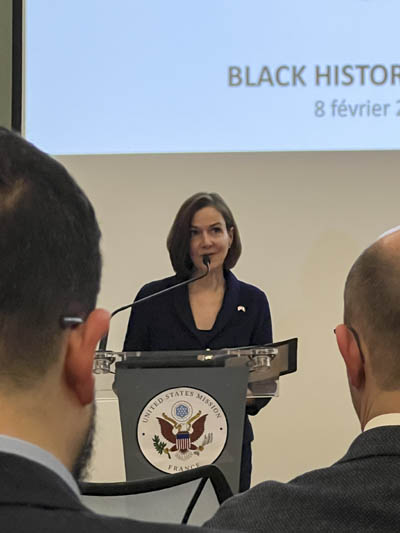 Ambassador Denise Campbell Bauer at the podium
Ambassador Denise Campbell Bauer at the podium
© Entrée to Black Paris
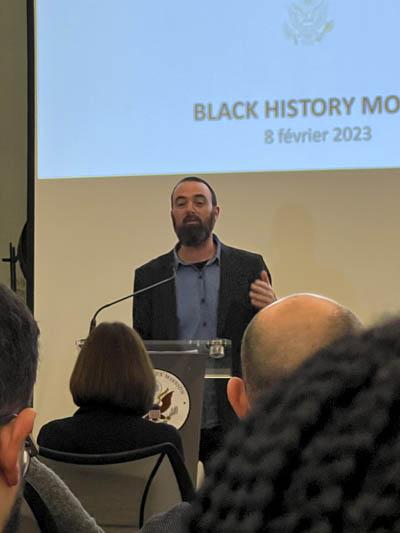 Director Matthieu Verdeil at the podium
Director Matthieu Verdeil at the podium
© Entrée to Black Paris
The screening was preceded by a musical interlude and a reading from McKay's recently published Romance in Marseille by Lamine Diagne, who also features prominently in the film.
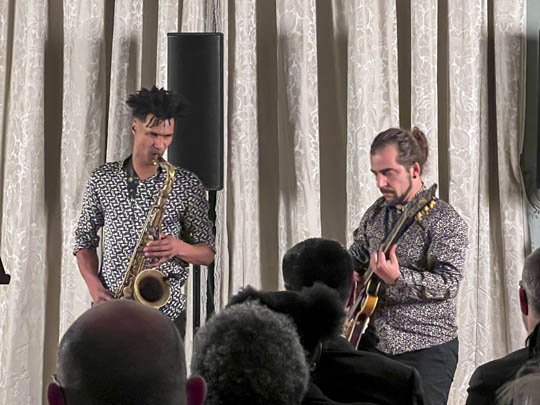 Musical interlude
Musical interlude
© Entrée to Black Paris
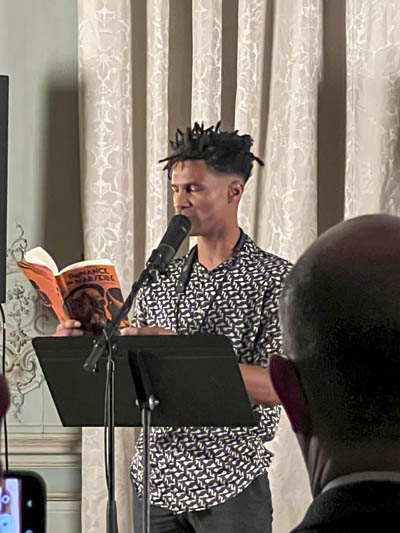 Lamine Diagne reads from Romance in Marseille
Lamine Diagne reads from Romance in Marseille
© Entrée to Black Paris
Only about 30 minutes of the 1h20m film were shown that evening. Once the screening was complete, the audience was invited to partake of food, drink, and conversation at a convivial reception.
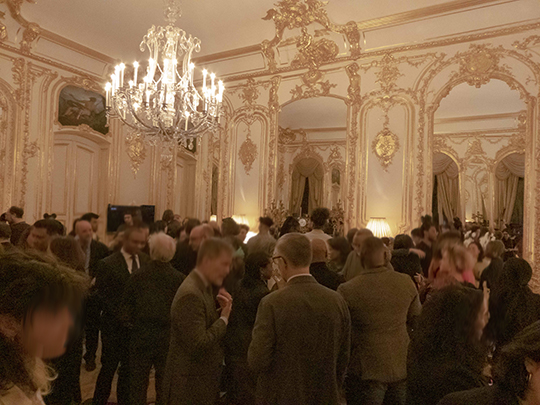 Reception crowd
Reception crowd
© Entrée to Black Paris
During his opening remarks, Director Verdeil said that he would provide access to the entire film to anyone who sent him an email to ask for it. I did, and Verdeil responded with a password-protected link to the video file, which is housed on Vimeo.
I watched the documentary with interest and was grateful to be able to stop the video and replay parts where I didn't quite catch what was said or wanted to look more closely at an image of a piece of art, a photo or post card, or a frame in a movie that Verdeil skillfully employed to evoke the atmosphere of the geographic locations McKay visited during his European travels.
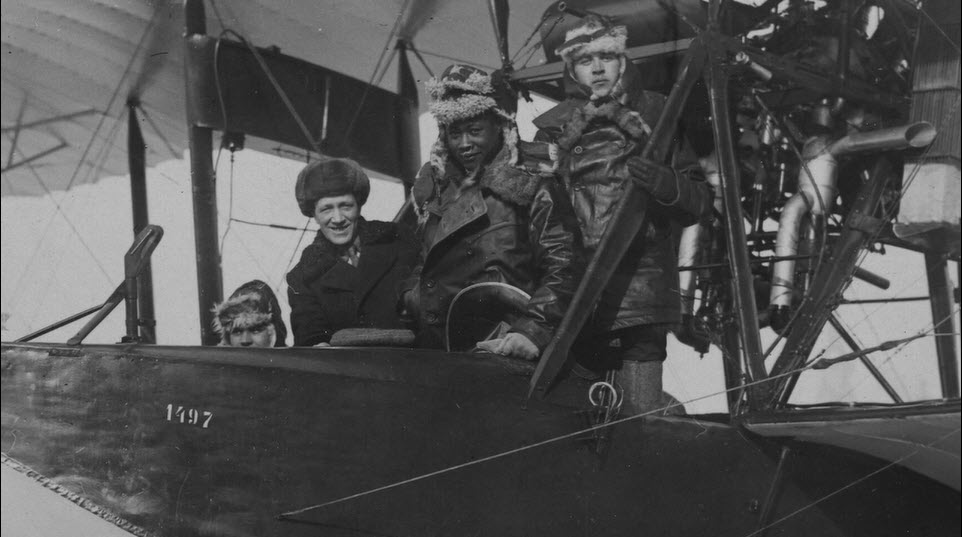 Claude McKay on a plane in Russia
Claude McKay on a plane in Russia
Detail of photo shown in documentary
Fair Use claim
Lamine Diagne is an author, actor, and musician. Viewers hear his mellifluous voice throughout the documentary as he reads passages from McKay's novels Banjo as well as from his autobiography A Long Way from Home during a jam session with a band called Big Hop Swing and friends.
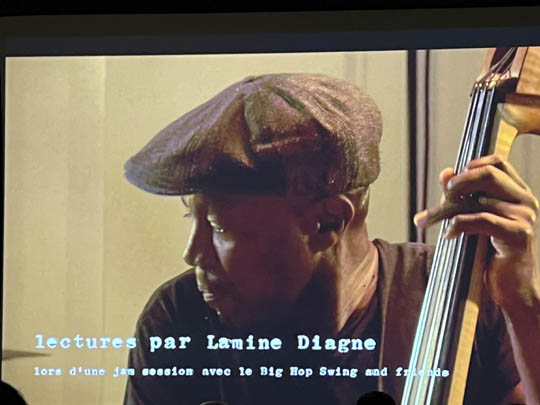 Frame from Claude McKay, de Harlem à Marseille
Frame from Claude McKay, de Harlem à Marseille
© Entrée to Black Paris
The film also features numerous scholars, musicians, and long time Marseille residents who comment chronologically on McKay's life and work, spending considerable time on his formative years in Jamaica, his eight years in the U.S., and the ten years he spent in Europe. Professor Jarrett Brown of Howard University reads from A Long Way from Home, and actor/rapper Ice T recites McKay's iconic poem "If We Must Die." (Ice T does not appear on camera.)
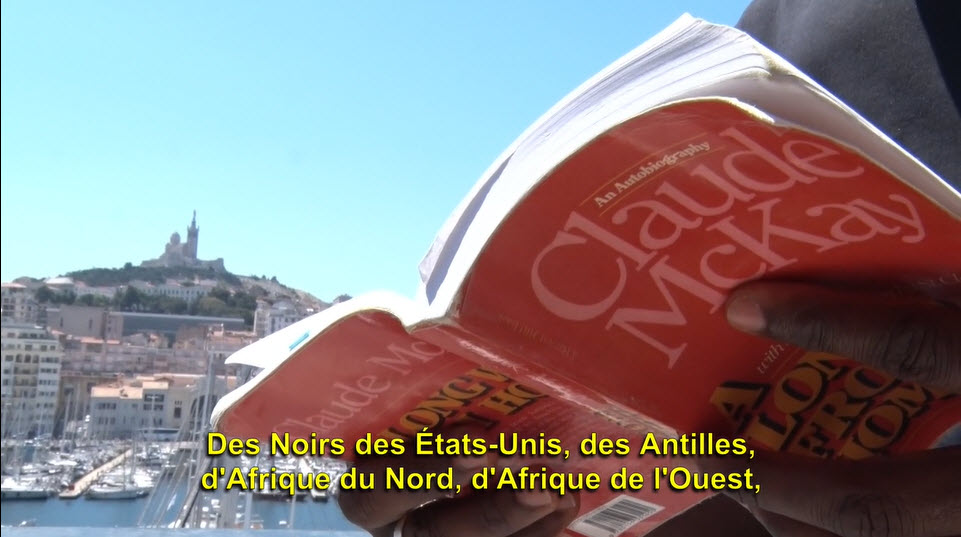 Professor Jarrett Brown of Howard University reads from A Long Way from Home
Professor Jarrett Brown of Howard University reads from A Long Way from Home
Screenshot from documentary
Fair Use claim
Less than four minutes are spent on McKay's time in Paris. Virtually no time is spent on his years in Morocco, his return to the U.S., and the last years of his life there.
About fifteen minutes before the end of the film, scholars introduce the subject of the use of the terms nègre, Negro, and the "N" word as they have been understood throughout the centuries.
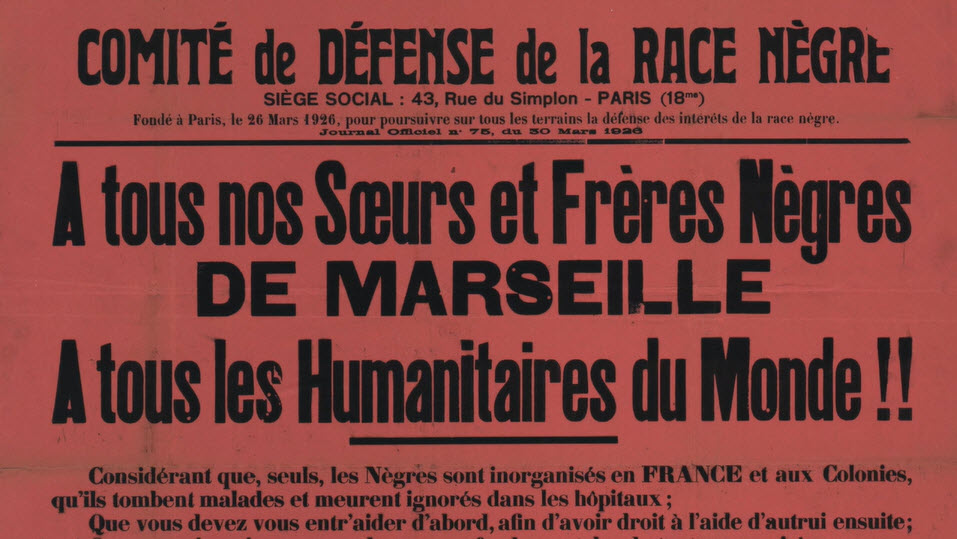 Headline for announcement by the Comité de Défense de la Race Nègre
Headline for announcement by the Comité de Défense de la Race Nègre
Detail of image shown in documentary
Fair Use claim
Dr. Issa Koné, a physician from Mali who immigrated to Marseille over 40 years ago, explains how he was confronted by his blackness when he arrived in France. He says he did not know that "black" (in terms of people) could be considered a homogeneous entity. He thought it natural to view someone from Senegal as different from someone from Jamaica and that a Jamaican would be considered different than an African American.
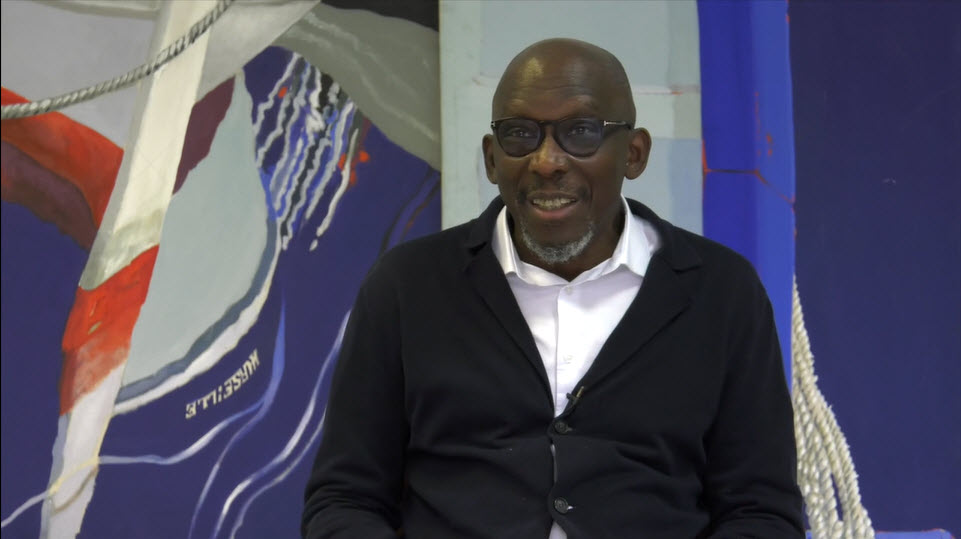 Dr. Issa Koné
Dr. Issa Koné
Screenshot from documentary
Fair Use claim
Viewers then see a manuscript of McKay's that has been edited to replace the word "Negro" with "colored" or Afro Americans."
About ten minutes before the end of the film, scholars discuss the story line of Romance in Marseille (2020, Penguin Classics) and the reason his editor thought the manuscript was "too shocking to sell." (McKay graphically depicted multiple same-sex relationships in the book, which he began writing in 1929.)
About five minutes before the end of the film, Professor Brent Hayes Edwards of Columbia University states that McKay's Marseille novels "still feel relevant to me, perhaps even more relevant in the age of Black Lives Matter and the crisis around trans-Mediterranean migration."
I thoroughly enjoyed Claude McKay, de Harlem à Marseille. Having never visited Marseille, I will be sure to reference this film in preparation for my first trip there - whenever that may be!
Claude McKay, de Harlem à Marseille was made with the backing of the U.S. Consulate General in Marseille and Films du Soleil. It was released in 2021.

 Our Walk: Black History in and around the Luxembourg Garden - Click here to book!
Our Walk: Black History in and around the Luxembourg Garden - Click here to book!